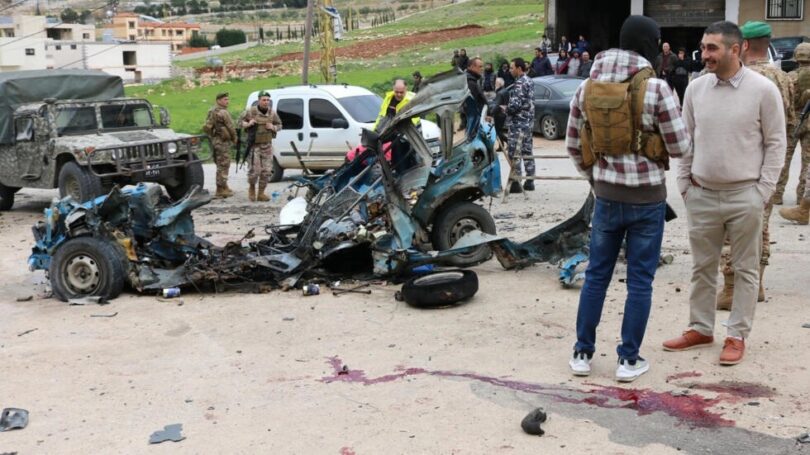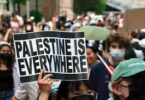BEKAA VALLEY (AFP) : Four people were wounded by Israeli air strikes near Lebanon’s eastern city of Baalbek overnight, one of which hit a two-storey building, an AFP correspondent said on Sunday.
Israel and Hamas ally Hezbollah have been exchanging near-daily cross-border fire since the Gaza war erupted in October.
But fears have surged of an all-out conflict in past weeks, with Israel launching air strikes deeper into Lebanese territory, targeting the Baalbek area — a Hezbollah stronghold — several times.
The Israeli military said in a statement fighter jets “struck a Hezbollah manufacturing site containing weapons in the area of Baalbek”.
The AFP correspondent said the Israeli strikes targeted a Hezbollah centre that had been deserted for some time, wounding four residents in nearby buildings.
“The Israeli air force fired five missiles at a two-storey inhabited building in Al-Osseira, on the outskirts of Baalbek,” he said.
The Israeli military also said “approximately 50 launches were identified from Lebanon toward northern Israel, a number of launches were intercepted while the rest fell in open areas”. Hezbollah said it fired “more than 60 Katyusha-type rockets” at two Israeli military positions in the occupied Golan Heights in response to the Israeli strikes.
The strike at Al-Osseira, some 100 kilometres (62 miles) from the Israeli-Lebanese border, ended a period of relative calm that had lasted around 10 days.
Hezbollah began launching near-daily attacks against Israel on October 8 in support of its Palestinian ally Hamas in Gaza and said on Saturday it had carried out several more strikes.
It says it will only end its attacks on Israel if there is a ceasefire in Gaza.
Israeli Defence Minister Yoav Gallant warned in February that a possible truce in Gaza would not affect Israel’s “objective” of pushing Hezbollah back from its northern border, by force or diplomacy.
At least 323 people have been killed in Lebanon, most of them Hezbollah fighters, but also at least 56 civilians, according to an AFP count. At least 10 soldiers and seven civilians have been killed in northern Israel, according to the military.
The exchange of fire, which was initially confined to areas close to the border, has also displaced tens of thousands in southern Lebanon and northern Israel.
Hamas official speaks of big gaps with Israel in truce talks: Deep differences exist between Hamas and Israel in negotiations for a Gaza truce, an official from the Palestinian militant group with knowledge of the talks told AFP..
The difficult talks over a ceasefire and possible exchange of hostages and prisoners resumed in Doha this week, with Israel’s spy chief joining Egyptian, Qatari and US mediators.
“There is a deep divergence in positions in the negotiations between Hamas and the occupation (Israel) because the enemy understood the flexibility shown by the movement as weakness,” the official said.
The official added that “the enemy wants to reach a temporary ceasefire after which it can resume its aggression against our people.”
Israel “refuses to agree on a comprehensive ceasefire and refuses the complete withdrawal of its forces from Gaza,” the official said.
The official added that Israel had indicated it wanted to keep matters of relief, shelter and aid under its control, and demanded “the United Nations not return to work, especially in the northern Gaza Strip”.
Long strained ties between Israel and the United Nations have worsened as international outrage has built over the heavy civilian toll and humanitarian crisis in Gaza.
The return of hostages taken in Hamas’s October 7 attack on Israel has been a central question in the talks — but the Hamas official did not offer any comment on the issue.
Palestinian militants seized about 250 Israeli and foreign hostages in the attack, but dozens were released during a week-long truce in November.
Israel believes about 130 remain in Gaza, including 33 who are presumed dead — eight soldiers and 25 civilians.







